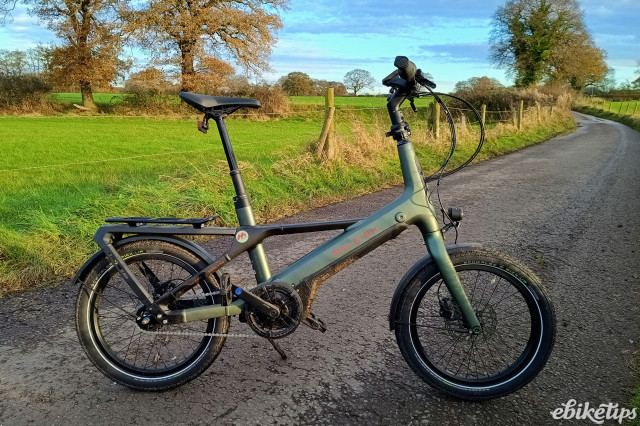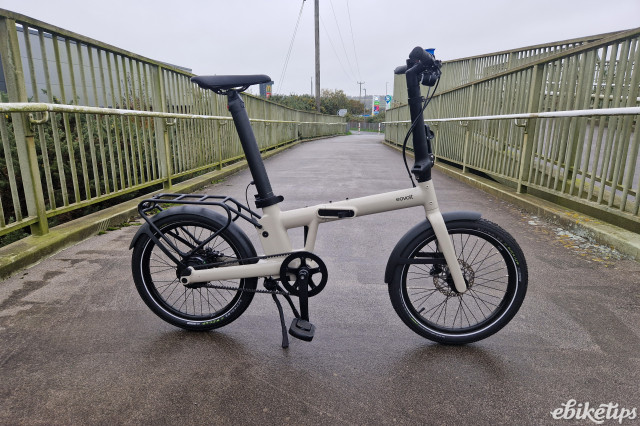Well, we’re currently sitting in Terminal 5 waiting for our flight out to Eurobike, the world’s biggest bike show. It’s a hotbed of new and interesting stuff, and there are always lots of new e-bikes to see. Before we get to the show halls, here’s a quick run-down of stuff we think we’re likely to see there. Where is the e-bike market going? What’s going to be the next big thing? Here are some predictions…
Motors and gearing combined
Okay, this one isn’t really a prediction: last year we already saw some manufacturers like Oeschler experimenting with putting the gearing and the motor in one box, and this year we’ll be heading over to the Continental stand. The German giant already has a well-regarded (if fairly rare) mid-motor drive system, but in July they announced that they had developed a new 48V motor system with built-in automatic transmission. And there should be demo units at the show for us to try.
On paper, combining gearing and motor makes lots of sense. It means all the complicated bits are centrally-mounted in a sealed unit, meaning that you can just use a simple single-sprocket wheel. You get a constant chain line that should be very low wear, and removing the rear wheel to fix a puncture is as easy as it can be. On top of that, sensors can monitor the gearing, meaning there’s no need for an external speed sensor (assuming you know the wheel size), and it also simplifies automated shifting.
We’d be surprised if Continental are the only manufacturer with a new internally-geared motor, although we don’t officially know of any others right now. Anyway, for higher-spec bikes it looks like the future.
More and better integration
This has been happening for years, so it’s more of a continuing trend than a new one, but e-bikes look less and less different from standard bikes every year. The Focus Project Y road bike , which uses the Fazua Evation drive system and an internal battery, is more or less indistinguishable from a standard bike at first glance. Motors are getting more compact, and batteries are too. Bosch have entered the fray with the PowerTube internal battery, and that will be a widely-specced system at the show. We’re looking forward to seeing the Riese & Müller Supercharger which uses two Bosch internal batteries for a 1,000Wh capacity.
The trend for displays is towards smaller and better-integrated units too: Bosch have moved wholesale from the bigger Intuvia display to the smaller Purion, and Brose, and Shimano with the E8000 system, both have neat, compact options. The trend towards smartphone integration will also continue, with companies using an app for controlling their systems with minimal controls on the bike itself.
27.5+ and bikepacking
The 27.5+ mountain bike wheel size works really well for e-MTBs: the bigger footprint gives better traction and comfort, and the extra weight isn’t really a concern. As well as trail-oriented e-MTBs we expect to see a lot more bikepacking-style bikes this year. Bikepacking is a big trend in cycling generally, and there are already companies out there that are bringing motors to the party. Kona recently unveiled their Remote e-bikepacking bike and they’re unlikely to be the only one this year. There’s a lot of fun to be had strapping a tent and a stove to a hardtail e-MTB and heading off into the woods. Obviously range is an issue, so we’d expect to see some dual battery options in the show halls.
New battery standards
E-bikes have until now almost exclusively used the 18650 battery standard. A typical e-bike battery has 40 of these cells arranged inside the case. The move in the battery market generally is towards the 21700 cell; that’s what Tesla will be making for their cars in the Gigafactory and other major manufacturers are following suit. It’s early days for the new battery but it promises to be able to deliver greater energy density: where 400-600Wh is currently the standard, we’d expect that to increase to 600-800Wh in the next few years, extending the distance you can go on one charge. It’ll be interesting to see how many companies have already adopted the new battery standard for their 2018 bikes.
Lots more carbon
A few years ago it was unusual to see a carbon e-bike. The tooling costs for creating a carbon frame are higher than they are with alloy, and the low overall sales of electric bikes meant it wasn’t commercially viable save for a few super-high-end bikes. That landscape is changing though: more e-bikes are being sold, bringing economies of scale, and more factories are building e-bike frames, bringing more competition and lower prices. Okay, it’ll be a while before we see carbon e-bikes in the mid-range, but they’re not exclusively just the top model in a range any more and the price for a full-carbon e-MTB is a lot less than it was two years ago, even with Brexit pushing the price of e-bikes generally higher.
And...
What else will we see? Well, we don’t know. It’s always exciting to get into the halls for the first time and see where the industry is going and what that means for bike buyers. We’ll be bringing you plenty of news over the next few days. Stay tuned!








